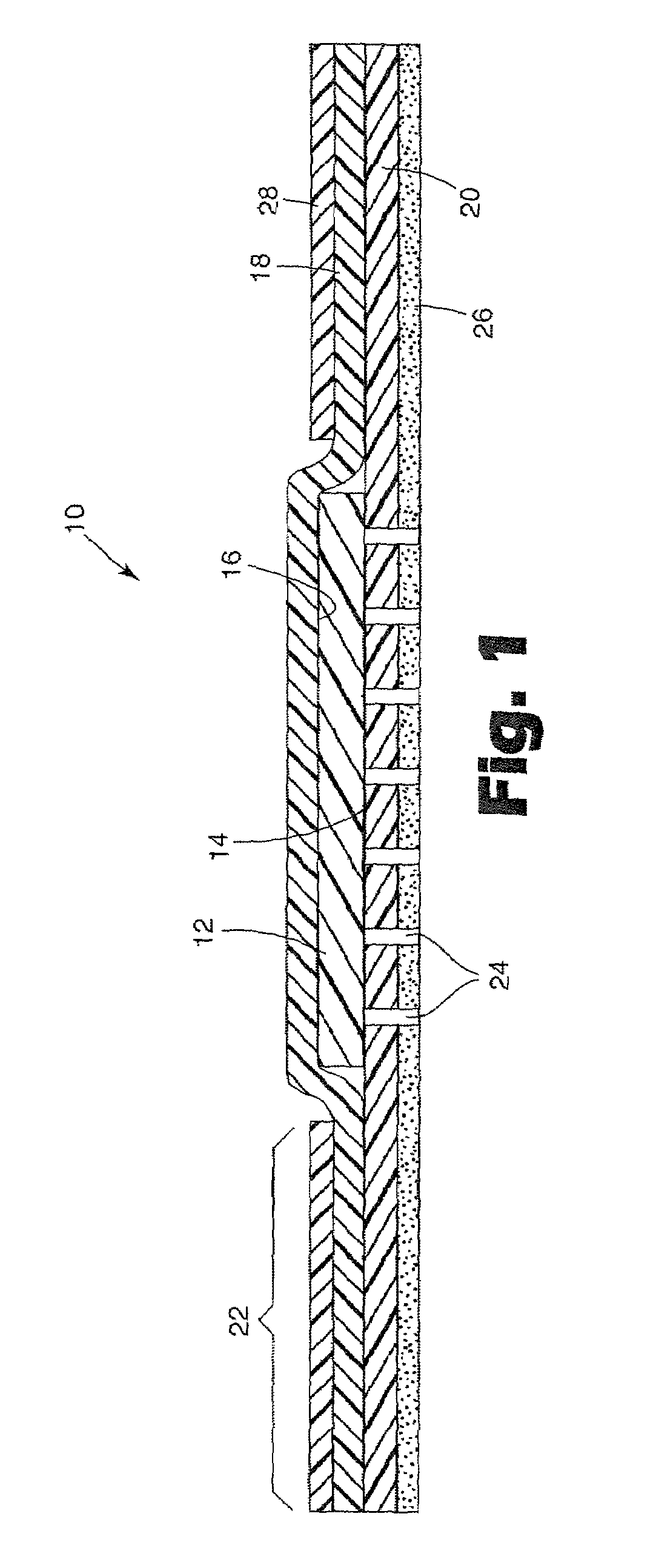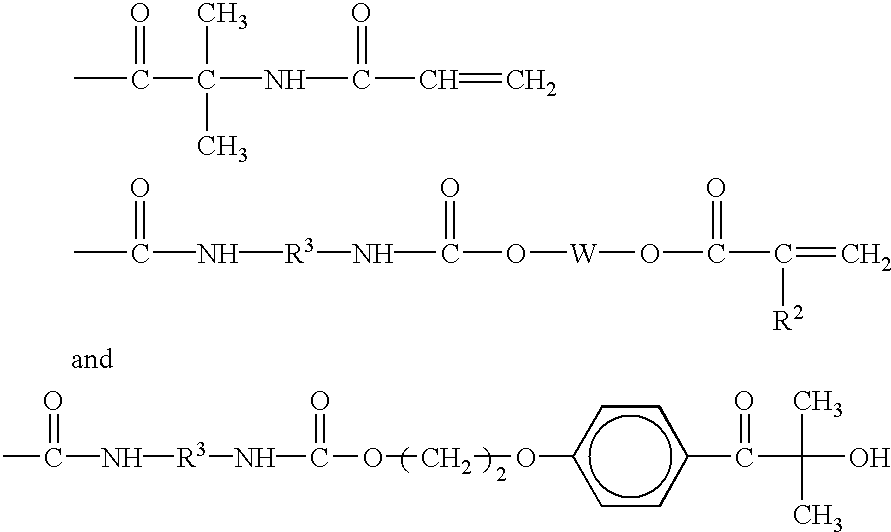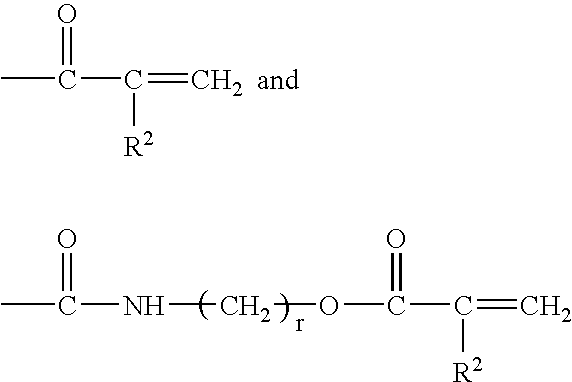Gel materials, medical articles, and methods
a technology applied in the field of gel materials and medical articles, can solve the problems of poor transparency, inability to observe the treatment state from the outside, and scab typically forms in and as part of the pad
- Summary
- Abstract
- Description
- Claims
- Application Information
AI Technical Summary
Benefits of technology
Problems solved by technology
Method used
Image
Examples
examples 1 – 3
Examples 1–3
Preparation of Absorbent Films
Example 1
[0112]A mixture of 99.8 g of the macromonomer MAA-PEG and 0.20 g. of IRGACURE 2959 photoinitiator (Ciba Specialty Chemical Corp., Tarrytown, N.Y.) were mixed on a roller for 24 hours then cured between two polyester release liners under UV light at a total dose of2100 mJ / cm2. The resulting polymer film was 1.1 mm thick when removed from the polyester release liners.
example 2
[0113]Example 2 was prepared as in Example 1 with macromonomer VAZ-PEG used instead of MAA-PEG.
example 3
[0114]Example 3 was prepared as in Example 1 with macromonomer IEM-PEG used instead of MAA-PEG.
[0115]The resulting polymeric films were tested for swelling in saline. The results for saline uptake are in Table 2. The samples remained transparent after swelling.
[0116]
TABLE 2IRGACURESalineMAA-PEGVAZ-PEGIEM-PEG2959UptakeExample(g)(g)(g)(g)(%)199.8000.207462099.800.2074030099.80.20680IRGACURE 2959 from Ciba Specialty Chemical Corp., Tarrytown, NY
PUM
| Property | Measurement | Unit |
|---|---|---|
| glass transition temperature | aaaaa | aaaaa |
| mole ratio | aaaaa | aaaaa |
| viscosity | aaaaa | aaaaa |
Abstract
Description
Claims
Application Information
 Login to View More
Login to View More - R&D
- Intellectual Property
- Life Sciences
- Materials
- Tech Scout
- Unparalleled Data Quality
- Higher Quality Content
- 60% Fewer Hallucinations
Browse by: Latest US Patents, China's latest patents, Technical Efficacy Thesaurus, Application Domain, Technology Topic, Popular Technical Reports.
© 2025 PatSnap. All rights reserved.Legal|Privacy policy|Modern Slavery Act Transparency Statement|Sitemap|About US| Contact US: help@patsnap.com



